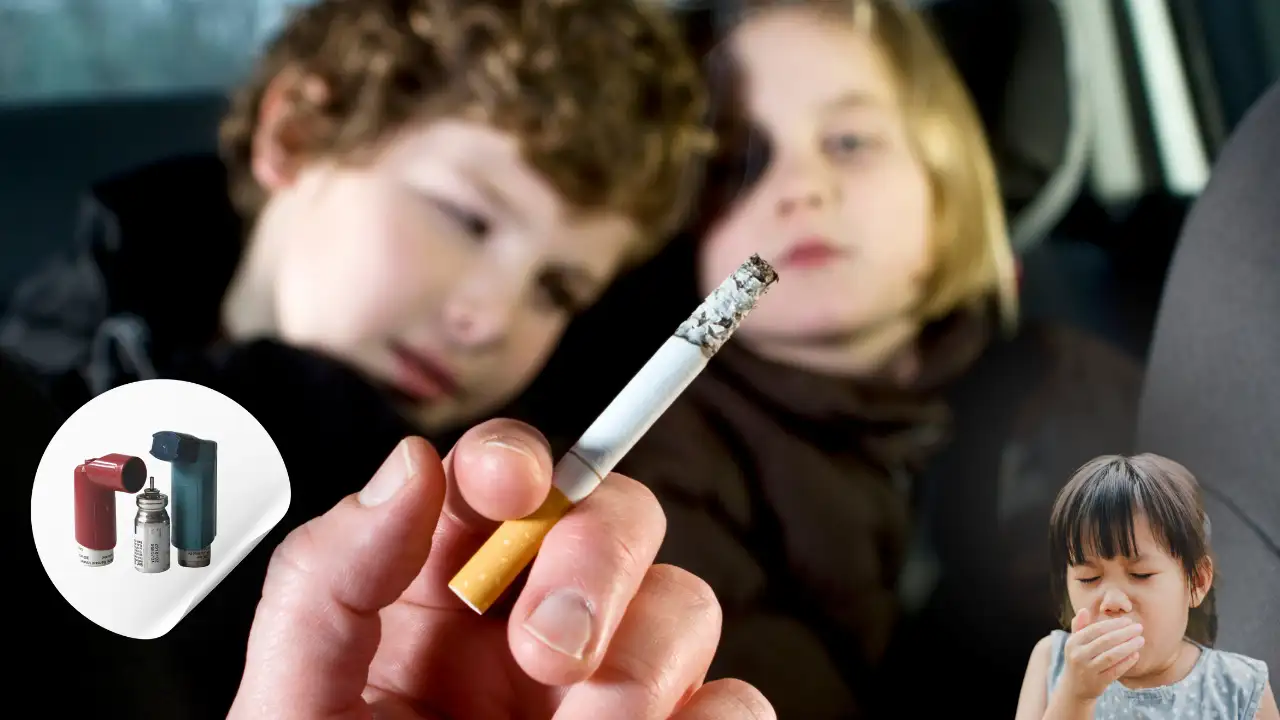Whether friends are over for a party, you are bored at a red light, or you want to kickstart your morning with a good dump—sometimes, you just feel the urge to light up a cigarette, and you do. What began as an occasional habit has now become routine. And now? You’ve got kids at home. You think stepping out to the balcony or locking yourself in the washroom to smoke keeps them safe. But let’s take a moment to talk about secondhand smoke (SHS), also known as passive smoking, and how it continues to pose serious health risks to children long after the cigarette is out.
We tap two experts to know how it affects those around you, especially children. They weigh in on how this lingering exposure impacts young lungs and immune systems, contributing to a range of respiratory conditions including asthma.
Understanding Secondhand Smoke and Its Effects
Secondhand smoke, or passive smoking, refers to the inhalation of cigarette smoke by a non-smoker who is in close proximity to the smoker and inhales the smoke that is exhaled by the smoker.
“Passive smoking is worse than smoking because the fume that emanates from the end of a cigarette contains more harmful substances than the smoke inhaled by the smoker, as there is no filter through which it passes. The particles are also smaller, which allows them to stay longer in the air and go deeper into your lungs,” explains Dr. Sheetal Chaurasia, consultant in pulmonary medicine, Manipal Hospital, Whitefield.
Children, in particular, are highly vulnerable to these effects.
Passive smoking is especially harmful for children as they have less well-developed airways, lungs and immune systems. Children who live with a smoker are more likely to develop multiple health issues like bronchitis, asthma, chest infections like pneumonia, ear infections and coughs and colds.
Dr. Chaurasia also explains how SHS interferes with lung development in children:
“Secondhand smoke exposure in children hampers the development of lungs both structurally and functionally. Because cigarette smoke is high in oxidants, inhalation of SHS increases the oxidant burden in child airways, which increases the inflammation in children's airways. This inflammation becomes a cause of recurrent coughs, wheezing, and nasal congestion in a child,” she says.
But not only is this a frequent cause of respiratory symptoms, it also reduces the local immunity in the airway, which makes a child develop repeated infections. “These infections then further affect lung development, cause lung function decline, and are a cause of both the development of asthma as well as exacerbations of asthma—with each exacerbation adding on to the reduction of maximum lung function that can be attained by a child,” she adds.
So, it creates a vicious cycle and affects both the health status and quality of life of children. “And asthmatic patients who are exposed to SHS have more severe asthma as well as higher chances that it may be difficult to treat with frequent exacerbations,” she warns.
Broader Impact of SHS on Childhood Asthma
Asthma is a prevalent international health problem that affects 300 million children on this earth. It results in narrowing of the airways, mucus production and breathing difficulties. Amidst this, the financial burden of inpatient care for the treatment of a severe attack may be high and the quality of life affected. In addition, acute attacks may impair pulmonary function, which could result in subsequent lung complications.
Experts identify SHS as a major asthma trigger:
There are many triggers for asthma. Among these, Dr. Udaya Sureshkumar, consultant pulmonologist at KMC Hospital, Mangalore, says secondhand smoke (SHS) is a significant risk factor, contributing to an estimated 1 million childhood asthma attacks.
He explains that children are at highest risk for exposure to SHS because their respiratory and immune systems are immature, and they are also least able to avoid exposure. "The relative growth of the lungs continues until adolescence, and SHS exposure may interfere with this, including in the prenatal period," he adds.
How SHS Affects the Body
SHS introduces oxidative stress, which harms the airways. Glutathione, a natural antioxidant, offers protection, but diesel exhaust (a component of SHS) reduces glutathione levels in lung lining fluid.
Dr. Sureshkumar also lists the immediate symptoms of SHS exposure:
- Loss of smell
- Nasal congestion
- Irritation
- Coughing
- Chest tightness
- Headaches
- Facial pain
While some of these symptoms may resolve quickly, others can persist.
Long-Term Consequences
SHS has over 4,000 chemicals, including 50-plus carcinogens and irritants that have been associated with a myriad of health issues in children, such as:
- Respiratory infections
- Ear disease
- Asthma exacerbation
- Nasal and sinus issues
Protecting Children from SHS
- Prevention: Don’t let kids near smokers or smoke-filled venues. The use of N95 masks may provide better protection if avoiding exposure is not possible.
-
Air Purification and Ventilation: Use HEPA air purifiers to eliminate particles in the air. Increase airflow by using ventilation options, like opening windows and fans.
- Keep Track of Lung Function: All children with asthma need to have their lung function monitored at home on a regular basis.
- Medication Management: Make sure kids are using appropriate inhalers as prescribed. Have a rescue inhaler available for emergencies.
- Asthma Action Plan: Create a plan with your doctor.
- Family Education: SHS and asthma consequences.
-
Tobacco Cessation Support: Give smokers incentives and help to stop smoking. Supply them with materials and knowledge about smoking cessation programs.
- Supplemental Measures: As an extra to aid in the reduction of thirdhand smoke, consider using air-purifying plants such as peace lilies and spider plants. But they don't take the place of the main approaches mentioned.”
Get Latest News Live on Times Now along with Breaking News and Top Headlines from Health and around the world.
